Whether you're planning a hike, bike ride, camping trip, or emergency kit, you need to consider water containers and cooking supplies. This is just my initial impressions and casual opinions, so don't take this as gospel. Some of these are new, some are not. One at least was definitely a mistake.
This is in part a long-overdue followup to my Camp Stove Shootout, and in part encouragement to better prepare for emergency situations. Backpacking favors light weight, while your emergency kit needs may vary depending on whether your focus is bugging out, hunkering down, or carrying a car kit in case of wilderness breakdowns.
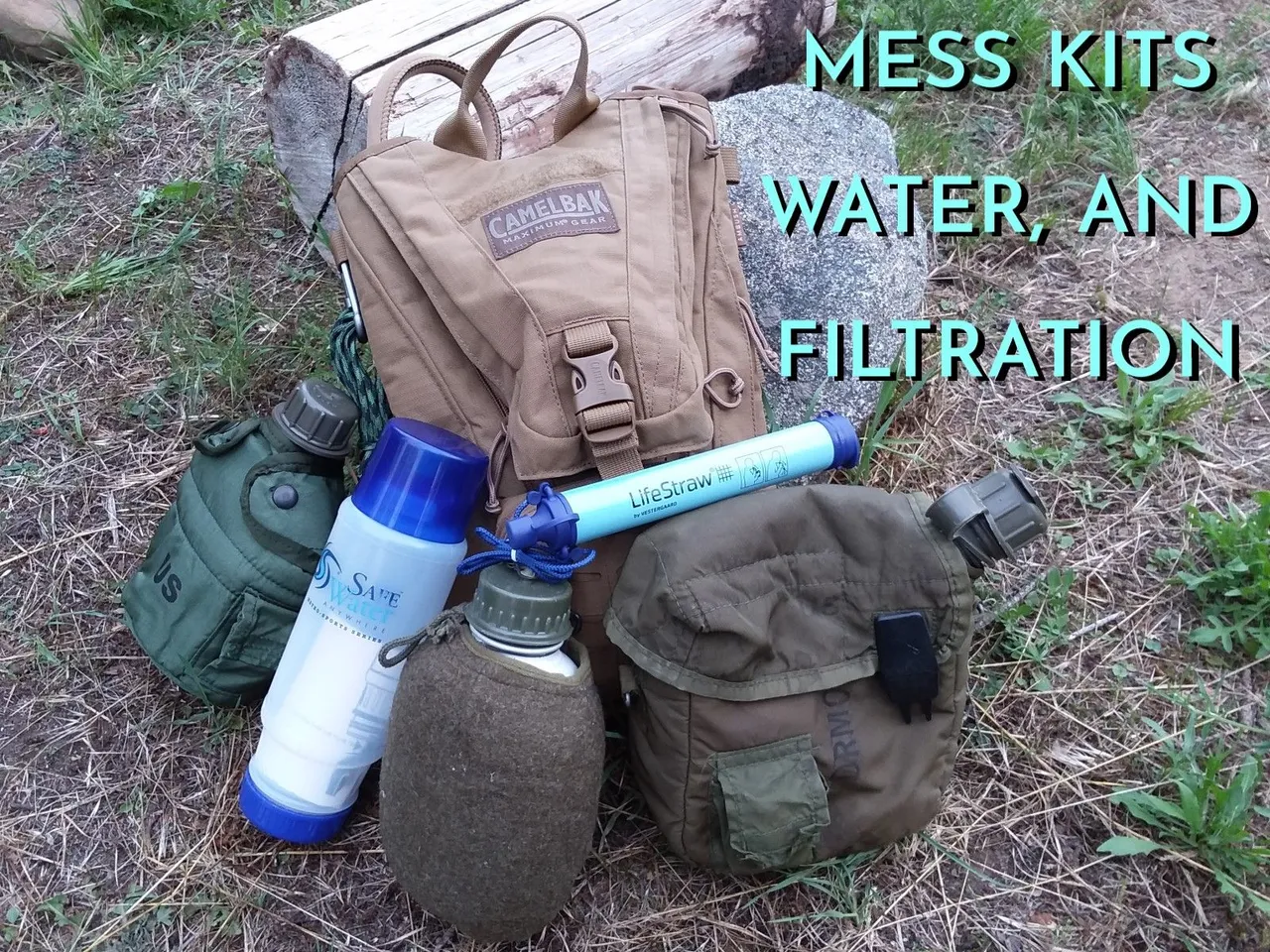
Hydration is essential for recreational hikes and emergency preparedness alike. Water is heavy, so carry what you can, and consider what you need to purify water you find. Pictured in the title image are a CamelBak system, a US GI 1-quart canteen in a canteen cover, a water filter bottle, a LifeStraw, a Danish surplus 1-quart canteen in a wool cover, and a larger US GI 2-quart canteen. How you carry water, and how much you carry, depends on a lot of variables. How well have you planned your route and resupply as part of your backpacking trip? If you are preparing for an emergency evacuation due to natural disasters or military invasion, what water sources might be available?
Any water in the wild can be contaminated with bacteria and parasites. Silt and sediment are not exactly ideal, either. If you have a way to filter or otherwise purify water you find, it makes for a happier and healthier trip.
The LifeStraw can help you safely drink from streams and lakes, but it won't remove salt, viruses, chemical contaminants, or heavy metals. A water filter system like the Katadyn Hiker Pro can process a lot more water for a group, or to fill other containers. Sawyer makes compact in-line filters that can slowly but effectively handle large volumes on a simple gravity feed system, or process small batches quickly with a squeeze bag. These are just a few specific products, and other brands may be as good or better.
Even without a filter, treatment options include using heat to boil water, exposing it to intense ultraviolet light, or chemicals to kill microorganisms. The US GI canteen cover includes a pocket for chemical tablets and neutralizers. Just remember to give the purification tablets time to work, usually 30-40 minutes, before adding the neutralizer or anything else. Read and follow label directions. You know the drill.
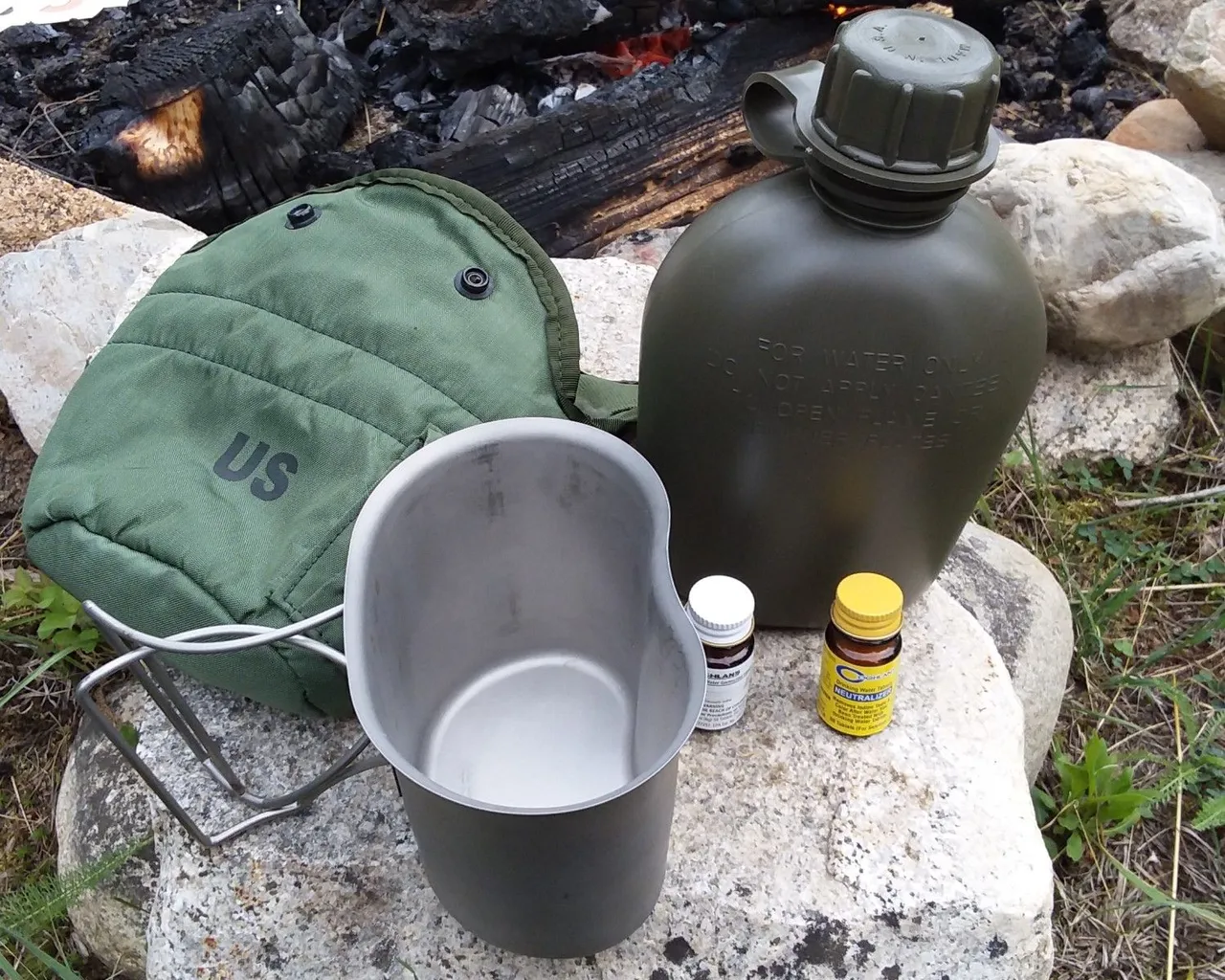
Hot food is a huge comfort item, and while an MRE usually has a heater pouch, anyone carrying freeze-dried food or planning on camp cooking needs a cooking pot or frying pan, and it's easier to eat from a platter or cup of some kind. The canteen pictured above nests inside that tin canteen cup, which in turn fits inside the canteen cover. It's a minimalist cooking vessel or coffee mug as needed on the trail. Stick it next to a campfire to boil water as an expedient sterilization method if need be. Just be sure to keep the plastic canteen and cover away from flames.
If the canteen cup isn't enough, I also have a couple dedicated mess kits, too. One is US GI surplus, the other is dirt-cheap tin. Finally, I even have a Stanley cooking pot I used in that camp stove post I mentioned earlier, too.
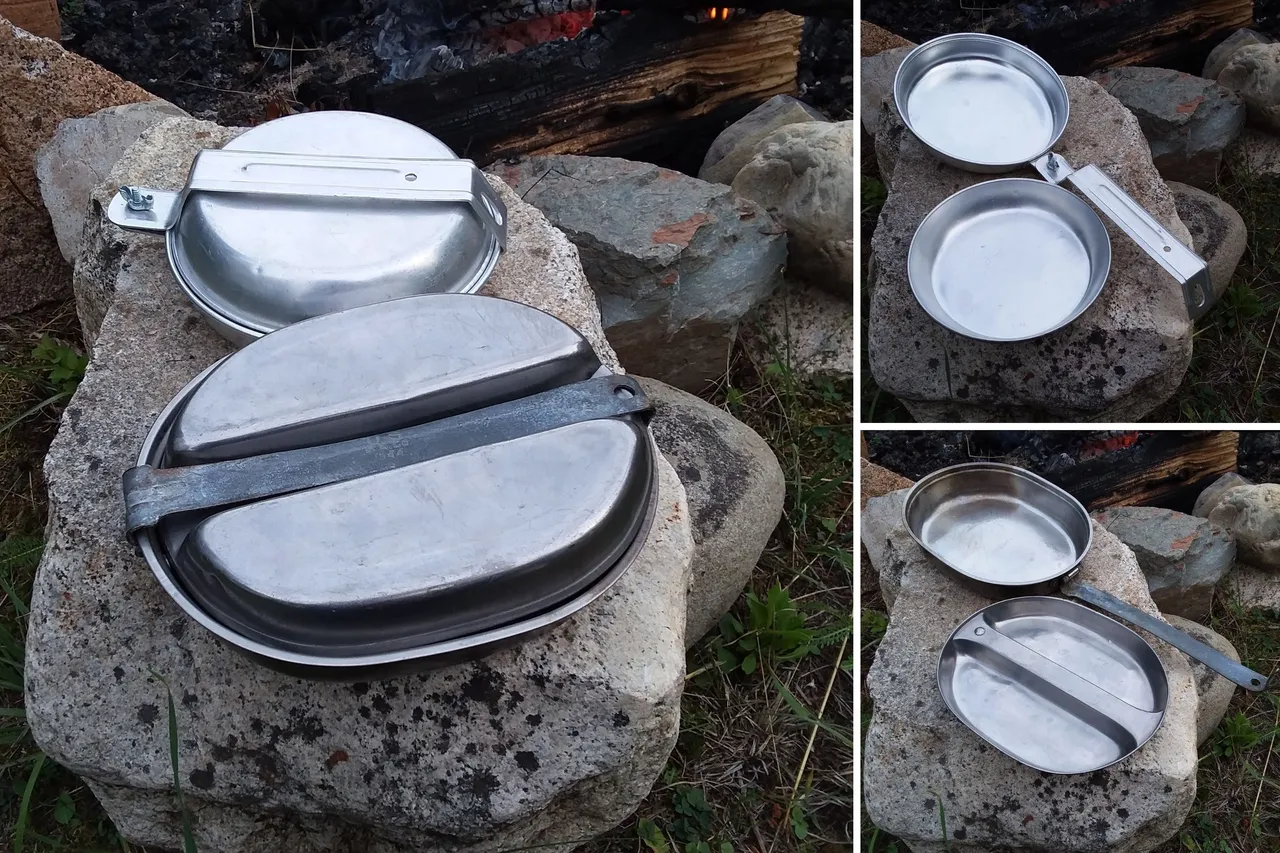
First up: The mess kits. The cheap tin one is not very nice, but it is light, and a lot can be stored inside it for better use of space. The top makes a decent bowl. I really don't care for the sharp edges along the handle or the wing nut swivel though. The GI kit has a divided tray that can balance on the extended handle so you can hold some serious chow. It's showing signs of age, but still seems sturdy enough. It's heavier, but also bigger with more internal storage volume. The handle has the look of old galvanized metal, and clips securely.
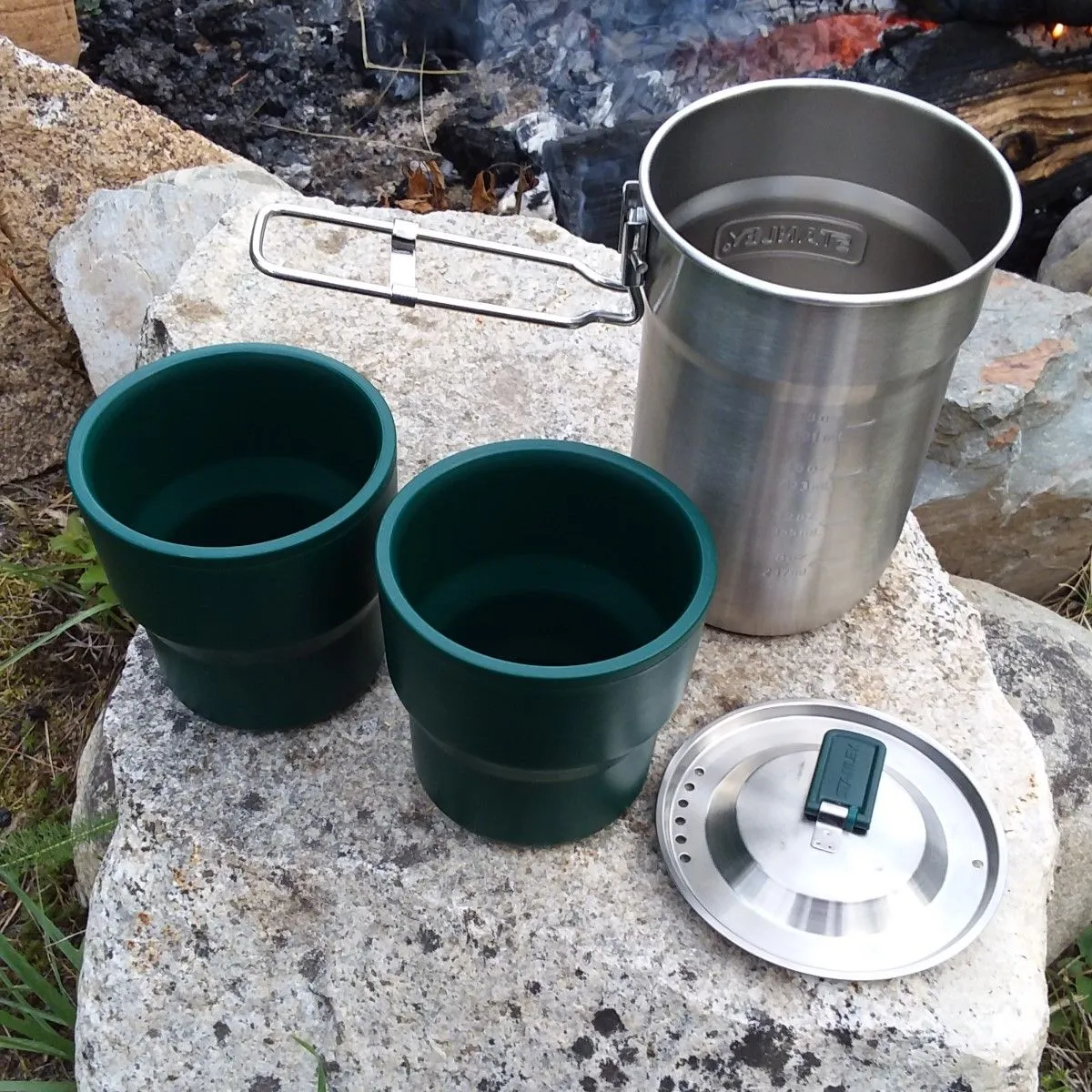
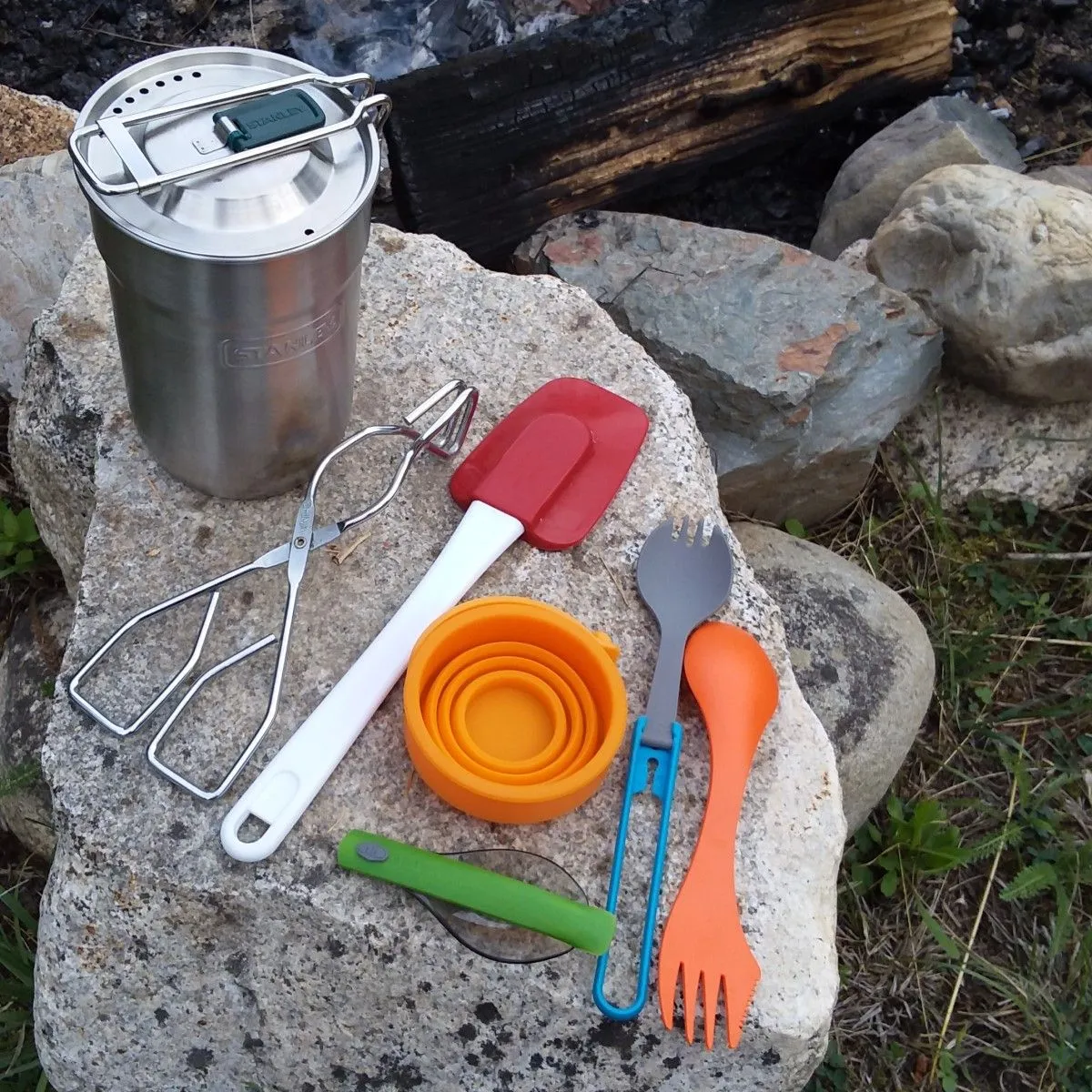
Left: pot, nesting cups, and lid. Note the locking tab on the handle which prevents the wires from squeezing together and unlocking the extended handle. Slide it closer to the pot for security, and slide it out to the end to unlock for folding.
Right: everything nested together for storage, and an assortment of utensils and tools. Tongs are useful, and a rubber spatula is essential to have on hand. The orange circle is a silicone rubber collapsing cup with a fold-out handle. I also have a telescoping spoon, a folding spork, and an orange all-in-one eating tool. You want some sort of silverware when camping, and I might even consider taking some silver-plated silverware for that extra anti-microbial protection, but it gets heavy, and takes up a lot of space. Tarnishing also is a bad look.
Now, all of the items mentioned above have pros and cons, but this last item is a con.
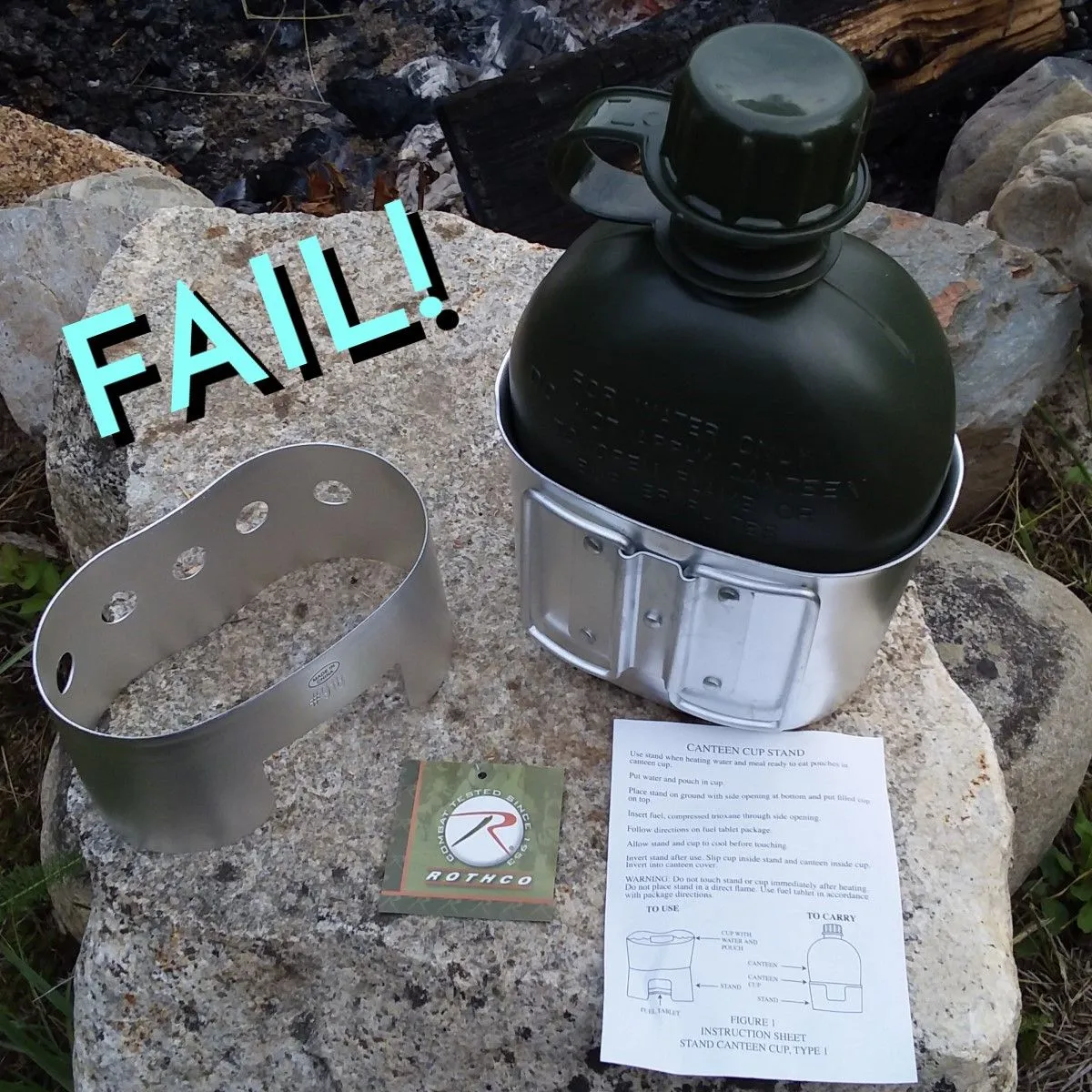
Rothco has supplied US-made military gear for decades. "Military grade" does not necessarily mean "good," more like " mostly meets the minimal standards set by the government at the lowest bid," but it usually does the job. This product should be an embarrassment to the brand. I thought I had been suckered by an Amazon counterfeit at first, but here it is on their own website. This is made in China, and feels like a different plastic than the US canteen shown earlier. The cup has flimsy little handles. The stove does not nest as depicted in the diagram, and feels unfinished with edges worse than the cheap tin mess kit handle. It doesn't work well to hold the canteen cup, either. And the canteen cover is thin and poorly constructed with cheap nylon. I hate this!
Oh, well. Sometimes you have to buy before you try.
If you want camping gear or survival supplies, consider your needs, the weight and bulk, durability, and quality of your gear and be prepared for the occasional mistake. One GI canteen kit is good, the other "GI" kit not. I don't hate the Danish canteen, but it's not a good fit with everything else, and I don't care for the way its single clip allows it to flop around, so it will probably go. The 2 quart canteen might have a place on long hikes. The CamelBak will probably get used mainly on bike trips. The Stanley pot and Esbit stove will be my main camping kit, although the heavier and bulkier BioLite CampStove I reviewed in 2020 will be part of my emergency supplies and car camping gear. I'm not a fan of the round mess kit. The GI mess kit will probably stay in use though.
What are your camp cooking essentials? Comments may earn $PIZZA tokens!

